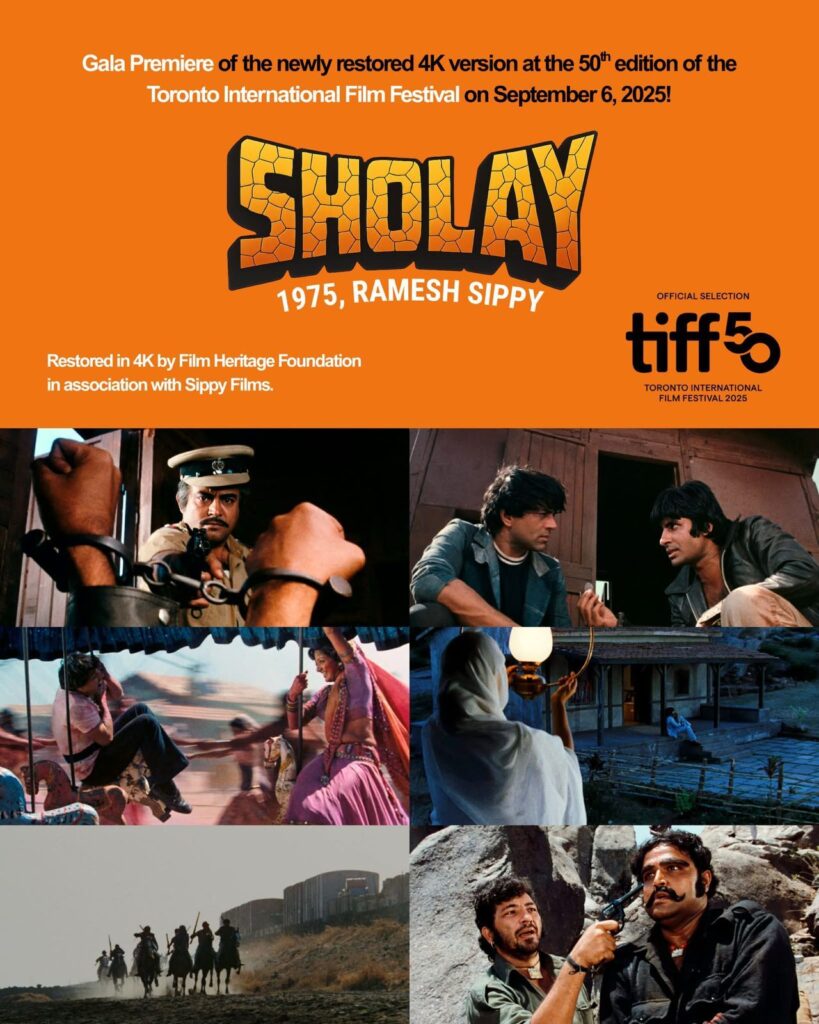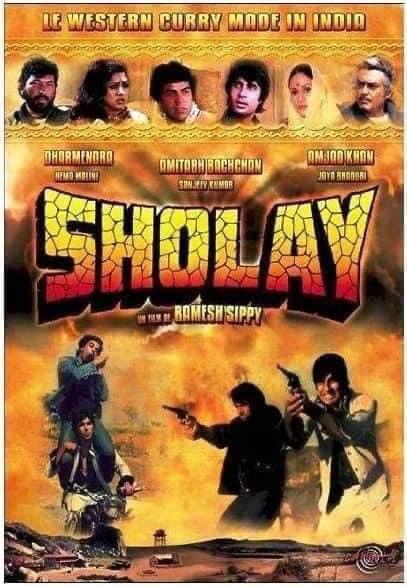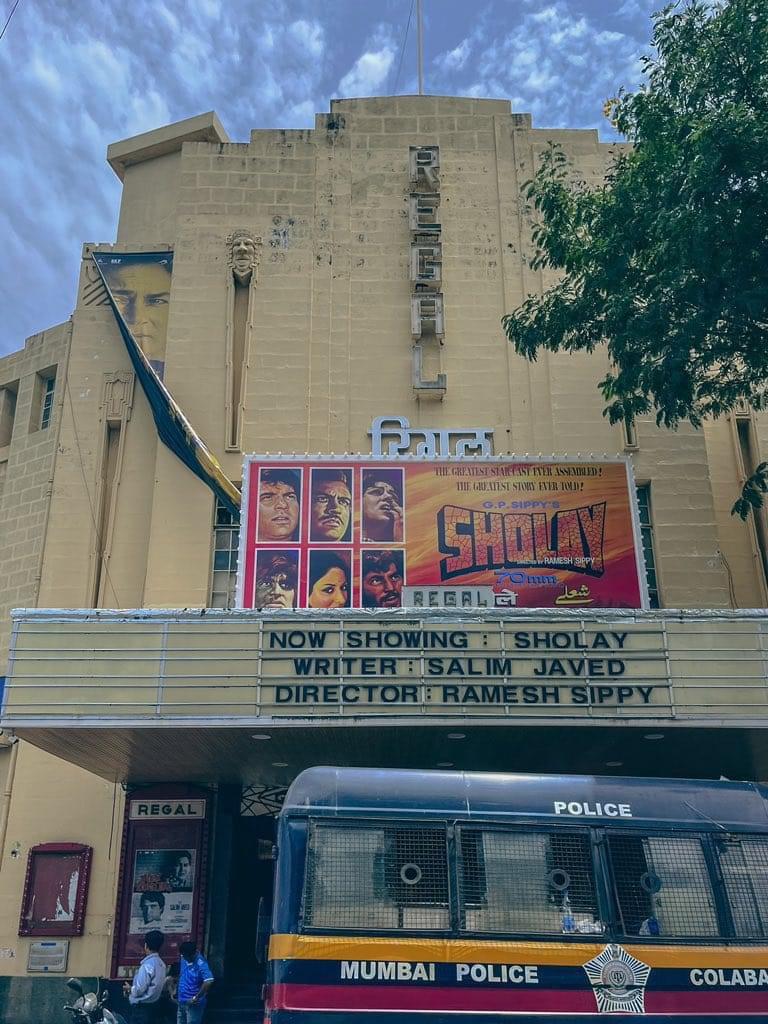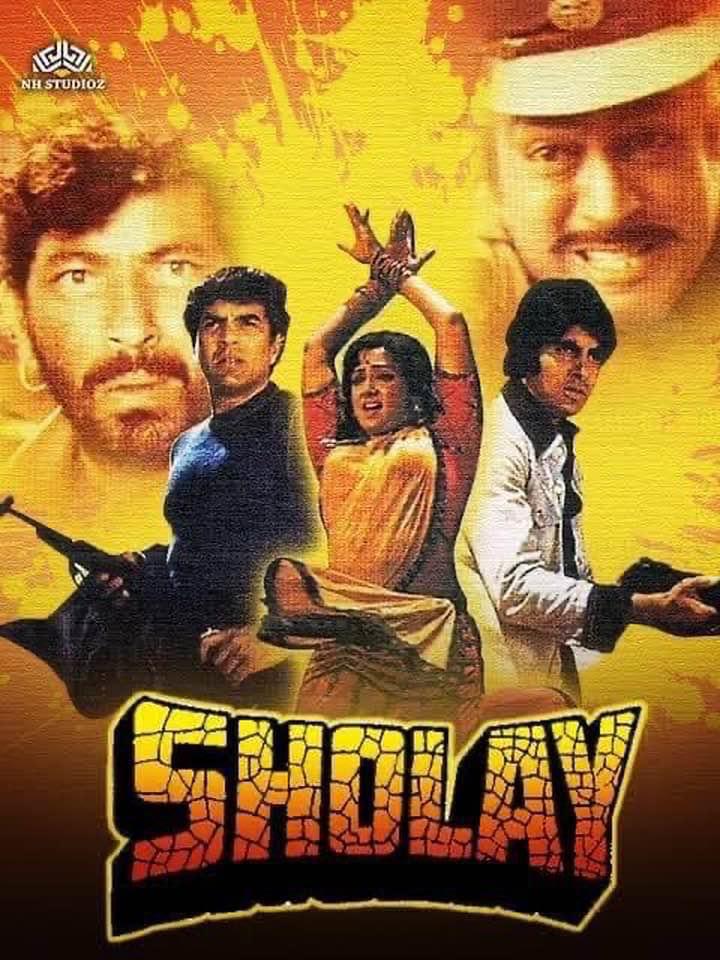
50th anniversary of the release of the iconic Bollywood blockbuster SHOLAY (released on 15 August 1975)Kitne Aadmi The? 50 Years of Sholay’s Unquenchable Flames
On August 15, 1975, a cinematic inferno erupted across Indian screens, forever scorching the landscape of Bollywood. Sholay, directed by Ramesh Sippy and penned by the legendary duo Salim-Javed, wasn’t just a film—it was a revolution wrapped in gunpowder, friendship, and vengeance.
As we mark its golden jubilee in 2025, the question that Gabbar Singh immortalized still echoes: “Kitne aadmi the?” But today, we ask: How many generations has this epic touched? From dusty villages to urban multiplexes, Sholay remains a cultural touchstone, its dialogues woven into the fabric of everyday Indian life. Adjusted for inflation, its box office haul towers at an estimated ₹15 billion in 2014 terms, making it one of the highest-grossing Indian films ever, second perhaps only to Mughal-e-Azam’s staggering ₹36.5 billion equivalent.
Yet, its true value lies beyond numbers—in the hearts it captured and the cinema it transformed.
The film’s poster, splashed in fiery yellows and oranges, captures its essence: Dharmendra’s Veeru, rifle in hand, standing defiant; Amitabh Bachchan’s brooding Jai; Hema Malini’s vivacious Basanti mid-dance; and the menacing shadows of Sanjeev Kumar’s Thakur and Amjad Khan’s Gabbar. Another variant, labeled “Le Western Curry Made in India,” highlights the international flair, with the cast lined up against a desert backdrop. And then there’s the real-world echo: a photo of Mumbai’s historic Regal Cinema in 2024, its marquee proudly announcing “Now Showing: Sholay,” a nod to the film’s timeless pull even half a century later. These images aren’t mere artifacts; they’re portals to an era when Bollywood dared to dream big.
Yeh Dosti Hum Nahi Todenge: Forging Bonds on Rocky Terrain
At its core, Sholay is a tale of unbreakable friendship, epitomized by the anthem “Yeh Dosti Hum Nahi Todenge,” sung by Kishore Kumar and composed by R.D. Burman.
Jai and Veeru, the roguish duo played by Bachchan and Dharmendra, ride into Ramgarh on a motorcycle-sidecar, their camaraderie setting a benchmark for bromance in Indian cinema. But this bond wasn’t scripted overnight. Salim-Javed, fresh off hits like Zanjeer and Deewaar, drew inspiration from Western classics like The Magnificent Seven—itself a remake of Akira Kurosawa’s Seven Samurai—infusing it with Indian melodrama and family values.
Filming in the rugged hills of Ramanagar, Karnataka—renamed “Sippy Nagar” post-production and now a tourist spot—took two and a half grueling years. The set, built from scratch, became a makeshift village where cast and crew endured harsh conditions: scorching heat, dust storms, and endless retakes. Ramesh Sippy, son of producer G.P. Sippy, envisioned a lavish spectacle, making Sholay India’s first 70mm film with stereophonic sound. Yet, the premiere at Mumbai’s Minerva Theatre used a 35mm print because the 70mm reels were stuck in customs, leading to a frantic 3 a.m. screening attended by Bachchan, Vinod Khanna, and Sippy himself.
Casting Legends

Casting was a saga of near-misses. Danny Denzongpa was initially signed for Gabbar but backed out due to scheduling conflicts with Dharmatma in Afghanistan. Shatrughan Sinha turned down Jai, while Dilip Kumar and Raaj Kumar declined Thakur. Pran was considered, but Sanjeev Kumar’s nuanced portrayal of the armless cop won out. Interestingly, it was Dharmendra who recommended Bachchan for Jai, a favor Bachchan acknowledged years later at an awards ceremony.
Jaya Bachchan’s Radha role was curtailed as she was pregnant with daughter Shweta during shooting.
Amjad Khan, a newcomer, stepped into Gabbar’s boots at the last minute on Salim-Javed’s recommendation. Paid a modest ₹10,000, he initially struggled with nervousness, especially in action scenes. Ramesh Sippy nearly replaced him after the first few days, but Amjad’s transformation into the snarling dacoit became legendary.
Trivia abounds:
Gabbar was inspired by a real-life bandit of the same name, and Amjad’s performance was so iconic that Britannia Biscuits featured him in a commercial munching biscuits as the villain.
Jo Dar Gaya, Samjho Mar Gaya: The Villain Who Stole the Show

No discussion of Sholay is complete without Gabbar’s chilling mantra: “Jo dar gaya, samjho mar gaya.” Amjad Khan’s portrayal redefined villainy, turning a ruthless dacoit into a pop culture icon. His lair in the rocky outcrops, complete with henchmen like Kaalia (Viju Khote) and Sambha (Mac Mohan), spawned memes and parodies that endure today. But behind the menace lay secrets: the film’s bravura action sequences, including the train ambush, were orchestrated by British stunt coordinators Jim Allen and Gerry Crampton, uncredited due to union objections and currency issues. Allen, a veteran of Sergio Leone’s spaghetti westerns, directed the second unit, while three British stuntmen, paid ₹50,000 each plus life insurance, performed death-defying jumps from a speeding train.
The original climax was far bloodier: Thakur stomps Gabbar to death with spiked shoes, a scene reshot during the Emergency era to show him handing the villain to police, appeasing censors who demanded less violence.
This change, along with other cuts, trimmed the film from 204 minutes to 198. Yet, these alterations didn’t dim its fire; they fueled its myth.
Supporting characters shone too: Asrani’s jailer, mimicking Hitler’s mannerisms; Jagdeep’s Soorma Bhopali; A.K. Hangal’s Imam Saheb with his poignant “Itna sannata kyun hai bhai?”; and Sachin Pilgaonkar’s Ahmed, whose death scene moved audiences to tears. Pilgaonkar later revealed that Sippy didn’t direct every frame—some action was handled by the British team. 6
Yeh Haath Mujhe De De Thakur: A Rocky Start to Box Office Glory
Sholay’s release was no smooth ride. Opening on Independence Day 1975 in 40 cinemas across Mumbai and Ahmedabad, it smashed day-one records: ₹1.73 lakhs in Mumbai (all housefull), beating Dost’s ₹1.41 lakhs. 14 In Ahmedabad, it collected ₹44,311, edging past Roti Kapada Aur Makaan. Expansions to East Punjab and Mysore followed, with over-capacity crowds in mass markets. By October, it broke records in Delhi-UP, CP-CI-Raj, Nizam-Andhra, and East India.
Yet, initial reviews were scathing—trade magazines labeled it a flop, and producers considered reshooting scenes. Salim-Javed’s confidence prevailed: “Wait a week.” Word-of-mouth turned the tide, leading to a five-year run at Minerva and silver jubilees in over 100 theaters, a first in Indian cinema. Overseas, it captivated the Soviet Union and Iran, where it remains synonymous with Bollywood.
Inflation-adjusted, Sholay ranks among India’s top earners, with footfalls estimated at 25-30 crore. It held the outright record until Hum Aapke Hain Koun..! in 1994, and milestones like ₹25 crore and ₹50 crore (including re-runs) were its alone.
Today, it competes with modern blockbusters like Baahubali 2 and Dangal, but its cultural ROI is unmatched.
Basanti, In Kutton Ke Saamne Mat Nachna: Empowering Women and Melodies

Hema Malini’s Basanti brought spunk to the screen, her tangy line “Basanti, in kutton ke saamne mat nachna” capturing her defiance. As the chatty tangewali, she challenged gender norms in a male-dominated narrative, while Jaya’s Radha embodied quiet resilience. The film’s women weren’t mere ornaments; they drove emotional arcs.
R.D. Burman’s score, with hits like “Mehbooba Mehbooba” (inspired by Cypriot folk) and “Holi Ke Din,” blended Western twang with Indian flair. Lata Mangeshkar, Kishore Kumar, and Manna Dey lent voices that still resonate. Sholay popularized the “curry western,” merging spaghetti westerns with desi drama, influencing films from Khuda Gawah to Ram Lakhan.
Its societal impact
Dialogues became slang: “Sardar, maine aapka namak khaya hai” for loyalty; “Tumhara naam kya hai Basanti?” in flirtation. Gabbar inspired villains like Mogambo, while Jai-Veeru’s friendship mirrored real-life bonds. During the Emergency, its themes of justice and rebellion subtly critiqued authority.
In Iran, it’s a cultural staple; a 2025 newspaper dedicated a full page, noting how Iranians link Bollywood to Sholay.
Tumhara Naam Kya Hai Basanti? Trivia That Ignites Memories
Delve deeper, and Sholay overflows with gems. The village set cost ₹2 lakh; horses were imported. Bachchan’s coin-toss scene used a double-headed coin for irony. Amjad’s “Arre o Sambha” made Mac Mohan a star, despite minimal lines. The film faced censor hurdles for violence, leading to reshoots.
Re-releases kept it alive: a 3D version in 2014 across 1,000 screens; uncut screenings at festivals like Italy’s Il Cinema Ritrovato in 2025.
In 2024, Film Heritage Foundation screened a vintage print at Regal Cinema, drawing nostalgic crowds chanting dialogues.
Videos from the event capture fans recreating scenes, a testament to its intergenerational appeal.
Javed Akhtar, reflecting on the jubilee, admitted he hasn’t watched it in decades, fearing it won’t match memories. Yet, he credits its success to flawless scripting, despite early flop fears.
Sardar, Maine Aapka Namak Khaya Hai: A Legacy That Endures
Fifty years on, Sholay isn’t just cinema—it’s folklore. It revolutionized action, sound, and storytelling, embedding itself in India’s psyche. From Gen Z memes to veteran tributes, its flames burn bright. As Thakur might say, “Yeh film nahi, ek yudh hai”—a battle won against time. In a world of fleeting hits, Sholay reminds us: True classics never fade.
Semi-centennial Celebration
Indian cinematic epic ‘Sholay’ (1975), directed by Ramesh Sippy, celebrates 50 years with the North American Premiere of the restored version at the 50th edition of the TIFF Toronto International Film Festival! This special screening will take place on September 6, 2025, at a gala event at the 1800-seater Roy Thomson Hall befitting the legendary status of the film.
The film has been restored in 4K by Film Heritage Foundation in association with Sippy Films Pvt. Ltd.
Hasnain Naqvi is a former member of the history faculty at St. Xavier’s College, Mumbai





